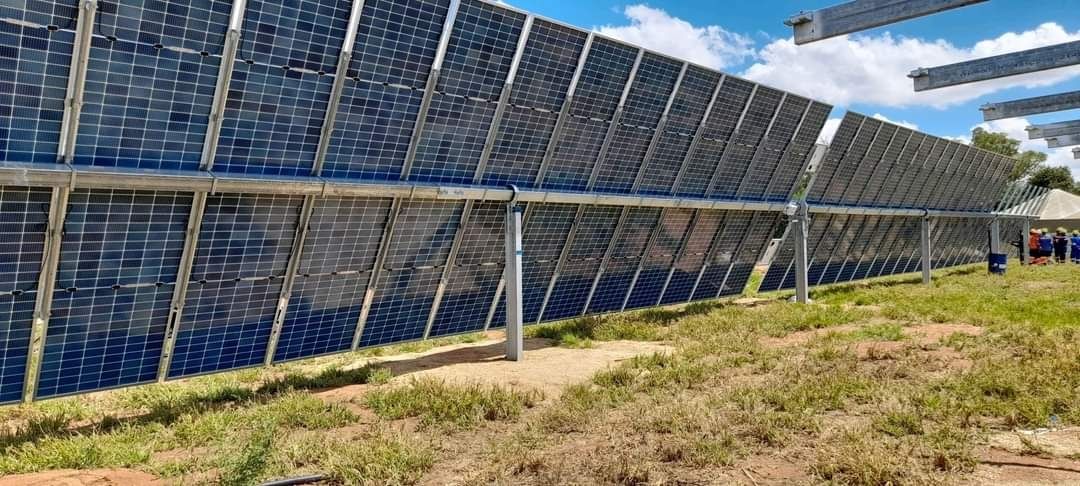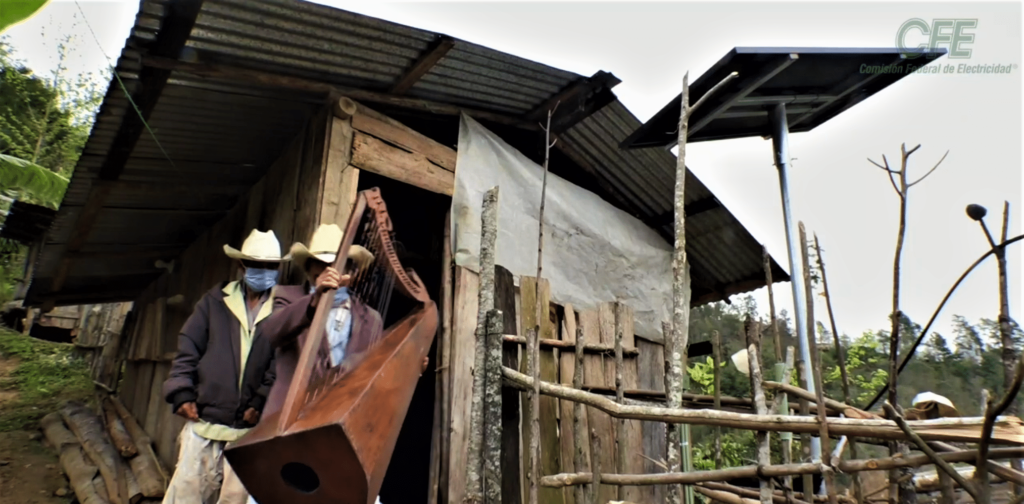https://www.pv-magazine-australia.com/2022/10/08/weekend-read-islands-in-the-sun/
Weekend read: Islands in the sun

Bushfires, like Australia’s Black Summer bushfires of 2019-20, pose an enormous threat not just to people, but also grid infrastructure. Microgrids enable rural and remote communities at the extremity of electrical grids to have improved stability and resilience.
Image: New South Wales Rural Fire Service
From pv magazine Issue 10 – 2022
The Blue Lake Rancheria is a federally recognised Native American tribe in northwestern California. In addition to its notable microgrid, the Blue Lake Rancheria’s land is also host to a hotel, a casino, a fuel station, multiple EV charging stations and even a brewery.
As the energy transition accelerates, the benefits of microgrids are being increasingly viewed as macrogrid solutions, too. Though still a niche innovation, microgrids are attracting more interest as pioneering projects prove their worth. In the United States, particularly states like California, microgrid projects have already demonstrated their value in times of crises. And now other parts of the world, such as Australia, are looking to replicate that success and in so doing improve resilience both for local communities and the wider network.
Major blackouts
At time of writing, California’s power grid is being stretched to its limit as an unprecedented September heat wave continues to affect the state. Only a desperate plea sent to millions of Californians’ cell phones asking them to turn off unnecessary energy devices averted major blackouts.
However, blackouts cannot be avoided entirely, and that is because for many parts of the state, particularly in the north, rolling blackouts and Public Safety Power Shutoffs (PSPS) are actually part of the plan to help the grid cope. In the case of PSPS, these pre-emptive power shutoffs began in 2019 as a response to increasingly untameable wildfires, an attempt to prevent fires caused by electrical equipment in high-risk areas.
For Jana Ganion, director of sustainability and government affairs for Blue Lake Rancheria (BLR), a federally recognised Native American tribal government located in rural northern California, PSPS events are known to last several days. Thankfully, BLR is home to a pioneering microgrid system that has demonstrated its value in a crisis several times already.
The islandable microgrid, meaning the system is grid-connected but capable of hiving itself into an island, is currently split into three nested systems and consists of 420 kW of PV and 1,150 kW / 1,950 kWh of battery energy storage. However, Ganion says further expansions to the microgrid are already underway, and not only because PSPS events are expected to continue over the next decade with some potentially lasting up to 10 days. Ganion remembers the first PSPS event in 2019: “Everyone in this region was underprepared. But we had the microgrids so the BLR tribe was able to keep its services up and running, including the fuel station, EV charging, refrigeration, telecommunications, ATMs etc.”
In fact, the region was so unprepared for these power shutoffs that the BLR worked with the Department of Health and Human Services to relocate people who needed powered medical equipment to its hotel. “They credited us with saving four lives in that event just because we could provide places for people to go,” says Ganion.
As more people began evacuating from the encroaching wildfires, “we had a Red Cross evacuation facility set up. We could also offer our spare diesel and gas to emergency responders, the local health clinic, and even the fish hatchery, all this critical infrastructure that were flat-footed when the shutoffs came and didn’t have our level of backup power.”
The story of BLR’s microgrid is demonstrable of what microgrids can offer remote and rural communities at the exposed ends of grid infrastructure. In partnership with California State Polytechnic University at Humboldt’s Schatz Energy Research Center, and thanks to a USD 5 million (AU$7.7m) grant from the California Energy Commission, BLR and the state of California wanted to demonstrate that a solar-powered microgrid could improve BLR’s energy resilience and reduce its carbon footprint at the same time.
“We went from being able to spot-power facilities with diesel generators to powering our whole central community and campus,” says Ganion. “It was a dramatic upgrade in the expansion of emergency power while also lowering the carbon footprint of that power.”
Crisis, opportunity
According to Warda Ajaz, a research analyst at Global Energy Monitor, who has studied microgrid adoption in the US extensively, “disasters act as a key landscape pressure for the adoption of microgrids in the US.” And it’s not just Californian wildfires either, as one of Ajaz’s interviewees said of the New York University (NYU) microgrid in Manhattan: “One of the shining examples [during Hurricane Sandy] was when lower Manhattan was dark… NYU [microgrid] was the only thing running and operating downtown. A lot of people call it the beacon of light in the darkness of Sandy, all of a sudden people started looking into it and saying, ‘Hey, this might be a good solution for our potential resiliency issues.’”
According to a paper Ajaz co-authored in Energy Policy titled “Microgrids and the transition toward decentralised energy systems in the United States: A Multi-Level Perspective”, it was extreme weather events in New York and California, and blackouts, that “exposed the vulnerability of electricity infrastructure and have emphasised the need for greater resilience.”
Ajaz’s study therefore found that such crisis can “often provide a window of opportunity for major policy changes.” Hence why, 12,000 km across the Pacific Ocean, governments, researchers and developers on Australia’s east coast are looking to microgrids for resilience in response to the devastating Black Summer bushfires of 2019-20.
Sun and SμRF
Researchers at the Australian National University (ANU) are embarking on a feasibility study project that centers around the deployment of islandable microgrids for the bushfire-affected communities of the Eurobodalla Shire Council, a coastal region south of Sydney in the state of New South Wales (NSW).
Funded by the Australian government’s Regional and Remote Communities Reliability Fund, the Southcoast Microgrid Reliability Feasibility (SμRF) project will examine the use of microgrids across eight selected sights in the Eurobodalla to ameliorate the impact of events like bushfires. “We hope this approach inspires other regional projects, policy makers, and funders to consider a wide range of factors in their efforts to boost resilience,” said Bjorn Sturmberg, technical lead on the SμRF project with ANU’s Battery Storage and Grid Integration Program.
Like many regional areas at the extremities of Australia’s National Electricity Market (NEM), bushfires, flooding, and other natural disasters threaten to cut off the Eurobodalla and leave communities stranded in their time of utmost need. The urgent necessity to build more resilience into the grid means that it isn’t just ANU academics who are looking at microgrid solutions, but also local electricity distributor Endeavour Energy, which is already developing microgrids at the nearby townships of Bawley Point and Kioloa.
Endeavour Energy’s chief asset and operating officer, Scott Ryan, told pv magazine that the impacts of climate change and the evolving energy landscape means “we must build a robust electricity grid that can deliver a resilient and renewable power supply for generations to come. Microgrids are clever ways to use locally generated renewable energy which is cost efficient and reliable.”
Both Bawley Point and Kioloa are at the edge of Endeavour Energy’s network and are currently served by two 11,000-volt power lines that travel approximately 75 km through an area prone to extreme weather events. “The microgrid will be made up of an interconnected 3 MW grid connected battery,” says Ryan. “Solar and home batteries, controlled by a distributed energy resources management system, to generate a renewable and reliable electricity supply that will reduce the frequency of outages.”
The $8 million (USD 5.5 million) project with partial support from the NSW Government’s Bushfire Local Economic Recovery Fund, sees Endeavour Energy working closely with around 75 local residents keen to take up residential batteries and take part in the microgrid scheme. With the microgrid’s ‘islandability’, “excess energy from residents’ batteries may be exported to provide power supply to the community so that everyone benefits.”
In time, Ryan says a 3 MW grid connected battery will replace the diesel generator currently situated at Bawley Point, with the ability to access diesel fuel in times of crisis a key risk for many communities. After all, rural communities can be just as easily cut off from diesel supplies as they can be from the electricity grid. BLR’s Ganion attests to this very predicament: “We’ve seen through wildfires and power outages that we’re not able to get diesel. Diesel based systems are risky for us, solar is not, the investment is much more predictable and of course healthier for the community.”
Micro steps
The demonstrative success of the BLR microgrid means that Ganion hears from people every day who would like to replicate its success. “Everybody wants a microgrid,” Ganion says, “and I think that’s great because what it does is get people excited about really paying attention to the electrical grid. People are starting to ask questions like ‘Where does our power come from?’, ‘How can we make it cleaner?’, ‘How can we have more local resilience and generation?’”
One such replicator is Humboldt County Redwood Coast Airport and Coast Guard station. In June 2022 the Redwood Coast Airport Microgrid (RCAM), consisting of 2.2 MW of solar alongside 2 MW (9 MWh) of battery energy storage in the form of three Tesla Megapacks, became operational. Schatz Energy Research Center founder Peter Lehman said RCAM “has ushered in a new and exciting era for the electric grid in California. With its successful deployment and the development of new microgrid agreements and tariffs, RCAM has become a role model and beacon to communities across the state who are striving to green their energy supply and bolster their resilience in the face of climate change.”
Like BLR’s microgrid, RCAM was developed in close collaboration with utility Pacific Gas and Electric (PG&E). PG&E’s Microgrid Incentive Program, set to leverage a USD 200 million (AU$310m) state-wide fund for green microgrid deployment, is expected to launch before the end of 2022.
This content is protected by copyright and may not be reused. If you want to cooperate with us and would like to reuse some of our content, please contact: editors@pv-magazine.com.
<




